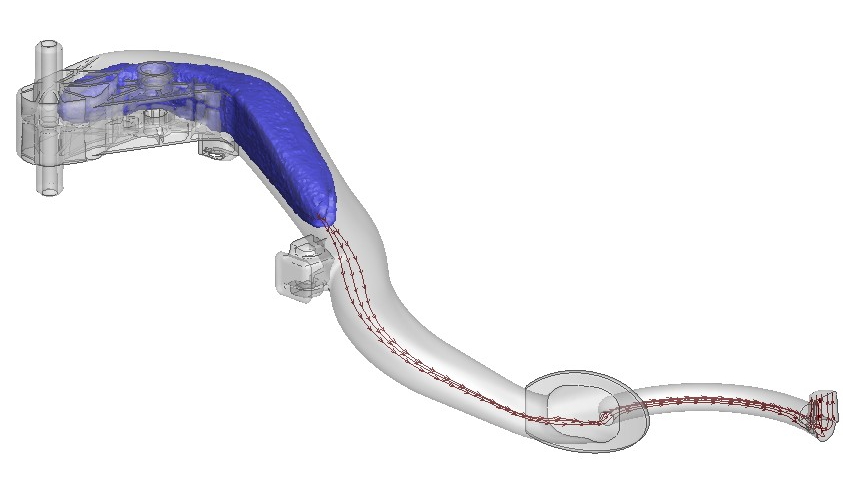First-ever Experimental Verification of WAIM Push-back Process Simulation
From Moldex3D
Fluid-assisted injection molding (FAIM) process applies a technique to let assisted fluid enter after plastic injection molding and form a hollow structure inside products. FAIM can produce hollow parts with good dimension control that conventional injection and blow molding cannot achieve. Also, unlike traditional injection molding, the fluid can hold pressure from the inner part for better pressure distribution across thickness and therefore can produce better surface finishes, reduce shrinkage and residual stress and achieve higher dimensional accuracy. As such, the technique of FAIM keeps getting promoted with lots of new patents of process methodology all over the world [i, ii, iii].
According to the amount of plastic melt injected into the cavity, we can categorize the FAIM process generally into two types:
- Short-shot method: In this early developed FAIM application, the amount of the injected plastic is less than the cavity space and rely on fluid to press and full fill the cavity. This method is very suitable for rod shape or large size hollow products, and the hollow rate is normally lower than 35%.
- Full-shot method: With injecting the full amount of resin into the cavity space, assisted fluid then only supports to pack more material for shrinkage during the cooling stage and collaborates with different techniques (to be discussed later) for better core-out control. Thus, it allows a wider range of hollow rate, and can effectively improve sink mark and warpage issues for thin-plate shaped product.
Full-shot FAIM process is a more favored technique among manufacturers since the short-shot method is more likely to cause defects like hesitation flow marks. For example, push-back is a common technique of water-assisted injection molding (WAIM) (shown in Fig. 1). In this molding method, the entrances for plastic melt and for water are at two different sides of the cavity, and water is injected after the cavity is fully filled to push the plastic melt back into the injection unit. With this technique, it can not only eliminate the flow mark issue in the short-shot method but also reduce material waste by reusing the resin that flows back to the injection unit and taking overflow out from the cavity. However, this technique requires a special design of the nozzle to prevent the melt from flowing back during the filling stage. Also, the melt and fluid entrances at the two sides must be considered in the product design.

